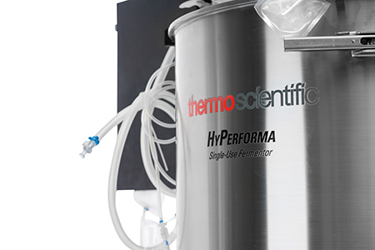The Benefits Of Single-Use Fermentation

Many biopharmaceutical manufacturing processes have been revolutionized by sterile closed-system SUTs. The benefits of single-use systems are widely known and include a decreased risk of cross-contamination, reduced global manufacturing costs, smaller equipment footprints, simplified validation, and wide-ranging utility.
Traditional single-use bioreactors, many of which have been on the market for more than a decade, are designed to accommodate cells that are not resistant to high shear and require gentle mixing. As a consequence, the mass transfer to the cell culture is relatively low. These technologies have not been adapted for fermentation, however; aggressive, aerobic microbial cultures require powerful mixing, high-oxygen mass transfer, efficient cooling, and improved exhaust and foam management. Retrofitting conventional single-use bioreactors is insufficient for these aerobic fermentations.
To address the challenges of aerobic microbial cultures, Thermo Fisher Scientific has developed a platform of technologies designed to meet unique microbial fermentation requirements. In a recent webinar, “The Benefits of Single-Use Fermentation,” a panel of experts from Thermo Fisher offered insight on the key technology solutions that support the upstream microbial workflow for vaccine production.
Get unlimited access to:
Enter your credentials below to log in. Not yet a member of Bioprocess Online? Subscribe today.
